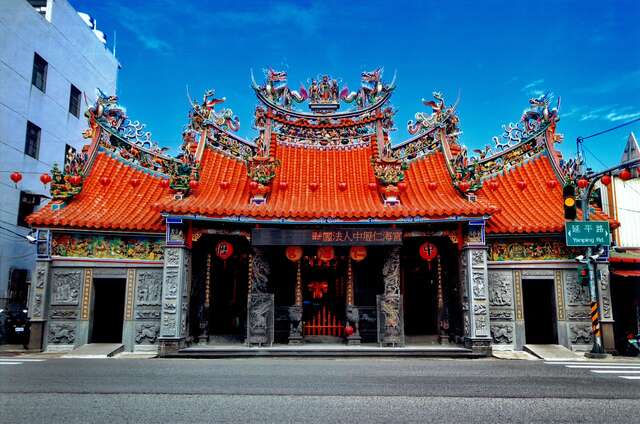Zhongli Renhai Temple Introduction
The Zhongli Renhai Temple, awarded fourth place in the Ministry of Interior's Top 100 Religious Sites in Taiwan, was founded in the 6th year of the Daoguang era (1826) and is dedicated to Mazu. With almost 200 years of history, it was jointly constructed by 13 villages from Zhongli, Pingzhen, and Yangmei, initially worshipping Avalokiteshvara and later adding Mazu. It has undergone five renovations and is the oldest temple in Zhongli, located on Xinjie Street, hence the nickname "Xinjie Temple." It has always been a bustling place of worship, serving as an important religious center for residents, and is also known as "Zhongli Mazu." During the Japanese colonial period, Renhai Temple was the only temple in Zhongli that escaped demolition during the Japanese assimilation campaign. The sanctum pavilion next to the temple, rebuilt during the Showa period, features the popular pebble-wash and Baroque decorative art style of the time, showcasing a unique architectural blend of cultures. The architectural layout and style of Renhai Temple are derived from traditional South Chinese architecture, consisting of a front hall, main hall, and rear hall, following a three-hall structure. The mountain gate stands independently in front of the temple, with four columns and three arches, creating a majestic atmosphere. In 2019, a renovation was completed, and a new incense Mazu shrine was added; this thousand-year-old incense Mazu statue, standing 109 cm tall and weighing 53 kg, is solemn in appearance and rare in that it is clad in official attire, holding unique significance comparable to other Mazu statues in Dajia and Yilan. Today, the Zhongli Renhai Temple often hosts various celebrations and folk activities. Annual events such as Mazu's birthday on March 23 of the lunar calendar, the "Zhongyuan Pudu" during the Ghost Festival, and the "Mazu's Return and Procession" in November attract worshippers from all over, making them significant festive activities. (Image source: Renhai Temple)







































